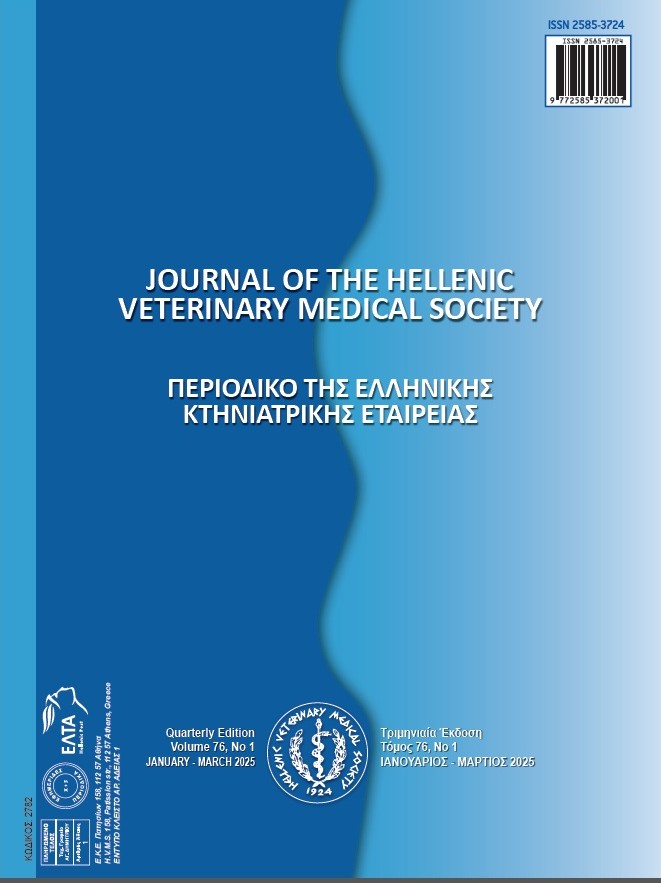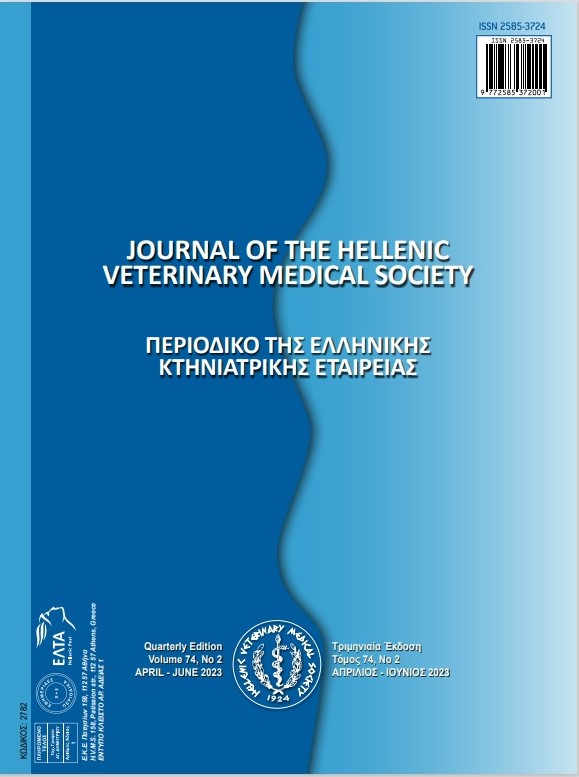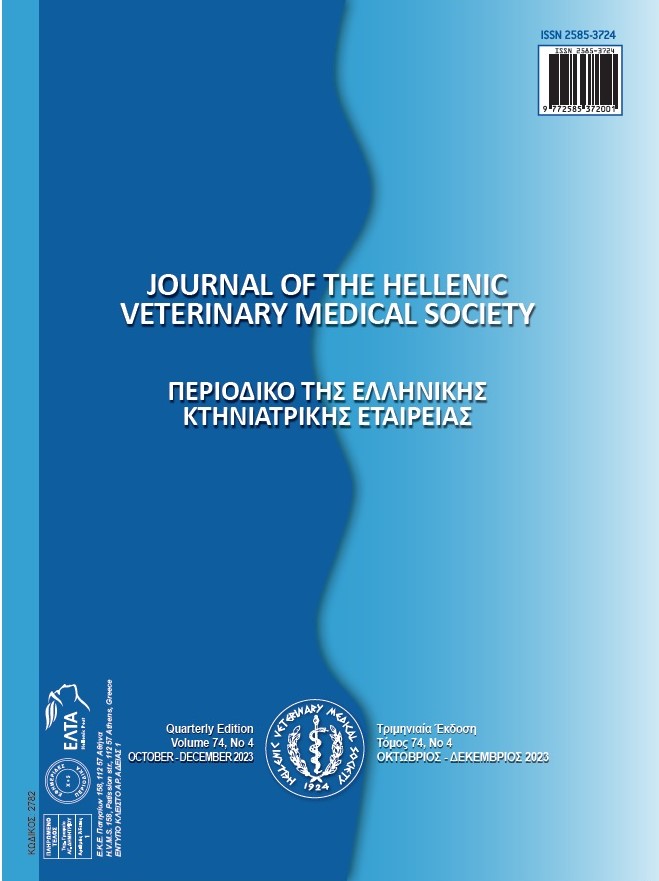Milk Yielding-Associated Hypokalemia and Treatment with Potassium Chloride in Holstein Dairy Cows
Abstract
SUMMARY: Potassium (K) is a major electrolyte in intracellular fluids. Milk as an intracellular fluid contains large amounts of K, and high-milk yielding cows always obligatory excreted significant amounts of K in milk, so they may be exposed to hypokalemia. Hence, this study aimed to investigate the serum K changes related to different milk production levels and to evaluate the treatment of the possible hypokalemic dairy cows with gelatin capsules of potassium chloride (KCl). 135 and 170 lactating dairy cows were studied from two farms (Isfahan and Behbahan, respectively) with different milk production levels. Blood samples were taken and serum K values were determined. In Behbahan farm, 12 out of 23 high-producing hypokalemic cows were randomly enrolled to treatment with KCl. Each cow received two capsules (each containing 100 g) at a 12-h interval and blood samples were taken at five-time points after administration. The results revealed that 31.6% of very high-producing (VHP), 11.4% of high-producing (HP), and 12.5% of medium-producing (MP) cows in Isfahan and 28.7% of HP, 11.1% of MP, and 8% of low-producing (LP) cows in Behbahan farm were hypokalemic. A significant K rising was observed only at 1/2 and 1 day after KCl feeding (p < 0.05), but it was below the physiologic level. In conclusion, HP dairy cows are at the highest risk for hypokalemia compare to the MP and LP ones, without underlying diseases and these hypokalemic cases require more and longer K doses than the conventional total doses.
Article Details
- Come citare
-
Nikvand, A., Nouri, M., Jalali, M., Makki, M., & Mogahi, A. (2025). Milk Yielding-Associated Hypokalemia and Treatment with Potassium Chloride in Holstein Dairy Cows. Journal of the Hellenic Veterinary Medical Society, 76(1), 8505–8512. https://doi.org/10.12681/jhvms.28699
- Fascicolo
- V. 76 N. 1 (2025)
- Sezione
- Research Articles

Questo lavoro è fornito con la licenza Creative Commons Attribuzione - Non commerciale 4.0 Internazionale.
Authors who publish with this journal agree to the following terms:
· Authors retain copyright and grant the journal right of first publication with the work simultaneously licensed under a Creative Commons Attribution Non-Commercial License that allows others to share the work with an acknowledgement of the work's authorship and initial publication in this journal.
· Authors are able to enter into separate, additional contractual arrangements for the non-exclusive distribution of the journal's published version of the work (e.g. post it to an institutional repository or publish it in a book), with an acknowledgement of its initial publication in this journal.
· Authors are permitted and encouraged to post their work online (preferably in institutional repositories or on their website) prior to and during the submission process, as it can lead to productive exchanges, as well as earlier and greater citation of published work.





